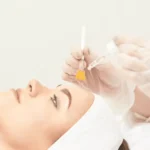
In the realm of aesthetic enhancements, Juvederm has garnered significant recognition among patients. It’s noteworthy that many aesthetic practitioners, in their pursuit of top-tier solutions for clients, frequently choose to buy Juvederm. While lesser-known brands like Stylage, a distinctive French line of hyaluronic acid fillers, may offer comparability and even enhanced suitability based on individual aesthetic objectives, Juvederm remains the cornerstone choice for the majority of aesthetic professionals. This article aims to illuminate the strengths of these leading brands and provide a comprehensive comparison to assist practitioners in making informed decisions for their clientele.
Similarities Between Stylage and Juvederm
The Juvederm line of dermal fillers are considered an integral component of the aesthetic doctor’s armamentarium. These best-selling dermal fillers are regularly used in many cosmetic injectable procedures. Products include Juvederm Voluma, a highly volumizing filler that is used to add fullness to large areas of the face, Juvederm Volbella, which is used for lip augmentation, and Juvederm Vollure, Ultra, and Ultra Plus, which are used for softening lines and wrinkles.
Generally speaking, Juvederm products have high G prime (a measure of the hardness of the gel) and medium to high cohesivity, resulting in a gel that is smooth, malleable, resistant to deformation.
Stylage is a European brand of injectable dermal fillers that are hyaluronic acid based. Their products include Stylage S, M and L, three products of varying viscosities that are used to improve the appearance of wrinkles and lines, and rejuvenate the back of the hands. They also have a filler used specifically for lip contouring, Stylage Special Lips.
A unique characteristic of Stylage dermal fillers is the addition of mannitol to the formulation. This antioxidant prevents free radical damage, improving the stability and longevity of the gel in dermal tissue. The antioxidative effects of mannitol also help lessen side effects like swelling and bruising.
How Do Stylage and Juvederm Compare?
Both the Stylage and Juvederm brands offer a range of products with varying hyaluronic acid densities that suit various treatment purposes. In this regard, they both cater to a wide variety of aesthetic indications.
Stylage is made using IPN-like Technology, which involves the transformation of individual cross-linked matrices into a monophasic gel through an interpenetrating network-like (IPN-like) process. This increases the density and degree of cross-linking without the need for additional cross-linking agent. Juvederm products, on the other hand, are made using Hylacross and Vycross Technologies, which both involve a single cross-linking process. In Vycross, high- and low-molecular-weight hyaluronic acid chains are incorporated to form a monophasic, monodensified gel.
Different manufacturing processes result in products with distinguishing physical characteristics that affect the way they integrate with dermal tissue. A microscopic analysis of Juvederm products reveal a cohesive consistency while Stylage products have a lighter, less dense structure with fewer continuous networks. When implanted into the dermis, the gel distributes evenly among the area of treatment in large pools.
As mentioned previously, another distinguishing feature of Stylage products is the addition of mannitol. This antioxidant preserves the physical characteristics of the gel by preventing damage incurred by free radicals, which are molecules generated by enzymes present as a result of the inflammatory response cause by the injection.
Differences Between Stylage and Juvederm
Stylage and Juvederm products share many common features, as the starting material in both these fillers is hyaluronic acid. However, the differences in the cross-linking technologies used to create the final products results in gels with different rheological and physical properties that affect their behavior within the dermis.
Additionally, Stylage contains mannitol, which is incorporated to decelerate product degradation, enhancing result longevity. The practitioner must understand these differences in order to select the right product for their patient.
Aesthetic injectable companies refer to businesses or companies that specialize in manufacturing, distributing, or providing aesthetic injectable products and services. These companies focus on developing and supplying injectable substances used for cosmetic purposes, typically administered by qualified medical professionals. Aesthetic injectable companies play a crucial role in the field of aesthetic medicine and cosmetic dermatology by offering a variety of injectable products designed to enhance facial features, reduce wrinkles, and improve overall skin appearance.
Key aspects of aesthetic injectable companies include:
-
Product Development: These companies research, develop, and manufacture aesthetic injectables such as dermal fillers, botulinum toxins (e.g., Botox), collagen stimulators, and other specialized formulations. They often innovate new products to meet evolving market demands and technological advancements.
-
Distribution and Sales: Aesthetic injectable companies distribute their products through authorized channels, including healthcare providers, medical spas, and aesthetic clinics. They may also sell directly to licensed professionals who administer these treatments.
-
Regulatory Compliance: Due to the medical nature of their products, aesthetic injectable companies adhere to strict regulatory guidelines and obtain necessary approvals from health authorities (e.g., FDA in the United States) to ensure safety, efficacy, and quality standards.
-
Training and Support: Many companies provide training and educational support to healthcare professionals on the proper use, administration techniques, and safety protocols associated with their injectable products. This ensures that practitioners can deliver treatments effectively and safely.
-
Customer Support: Aesthetic injectable companies offer customer support services to healthcare providers and consumers, addressing inquiries, providing product information, and assisting with product usage and troubleshooting.





